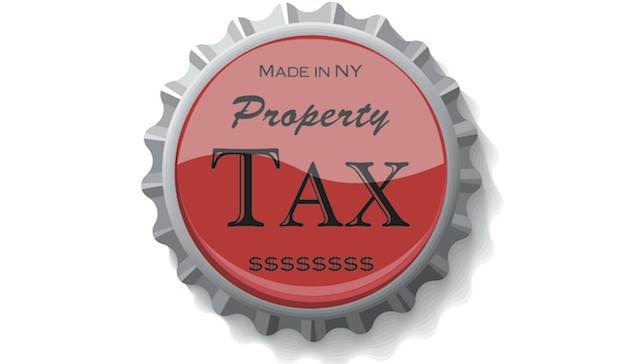
Yesterday, the Securities and Exchange Commission (SEC) announced a major settlement with J.P. Morgan Securities concerning the fascinating municipal-corruption case of Jefferson County, Alabama.
Under the deal, J.P. Morgan, which doesn’t admit or deny anything, will give up $722 million, including a penalty and foregone claims against the county.
The general New York attitude toward the Jefferson County debacle is that this is a rogue case with hick players and has nothing to do with us.
But the details show systemic problems that call out for a systemic regulatory solution. The same improperly regulated financial markets and firms that nearly brought the global economy to depression last year also have created fancy new avenues for old-fashioned municipal-finance corruption that would have made Boss Tweed marvel.
Jefferson County is famous for almost being bankrupt by its own hand. Its corrupt officials — the mayor of Birmingham, Jefferson’s major city, is currently awaiting a prison sentence — entered into $4 billion-plus worth of corrupt financial transactions on behalf of their taxpayers.
But one aspect of the case is very interesting. In the case that it settled yesterday, the SEC alleged that the J.P. Morgan Securities unit and two former managing directors
made more than $8 million in undisclosed payments to close friends of certain Jefferson County commissioners. … In connection with the payments, the county commissioners voted to select J.P. Morgan Securities as managing underwriter of the bond offerings and its affiliated bank as swap provider for the transactions.
How did this work?
As the SEC alleges in a still-outstanding separate complaint against the two men, J.P. Morgan’s regional guy, Charles LeCroy, together with his east-coast boss, Douglas MacFaddin, embarked “on a strategy to pay local firms whose principals or employees were close friends of certain County commissioners, but that were unable to participate as … swap providers under Alabama law.”
As the regional Morgan employee told his boss in Connecticut in a taped phone call, the strategy had the effect, for example, of besting a rival firm’s bid. The separate complaint alleges LeCroy as saying on the call
we kind of co-opted their — the minority firms [that the rival bidder] teamed up with because, the two black commissioners … said, ‘Look, if we support [one financial transaction,] you guys have to take care of our two firms.’ … And I said, ‘Whatever you want … just tell us how much.
With J.P. Morgan making the payments to the outside firms, the county voted to award the bank and affiliates $2 billion worth of custom-made swaps. The swap deals, according to the SEC settlement, were the largest in J.P. Morgan Securities’ history. The deals called for J.P. Morgan and the county to make payments to each other, depending on which way interest rates moved.
J.P. Morgan did not disclose the payments that it made to commissioners’ affiliates, which “wound up running into the millions of dollars,” to the county itself, though, the SEC observes. Taxpayers stayed in the dark.
OK, well, where does financial regulation fit into all of this?
Because the swaps were custom transactions — “agreement[s] between two parties,” as the SEC puts it — J.P. Morgan and its client had a lot of leeway to price them, well, in a customized fashion.
And that customization no doubt helped J.P. Morgan to “pass on the cost of the unlawful payments by charging the county higher interest rates on the swap transactions,” as the SEC settlement notes.
By contrast: If these swaps had traded on a central exchange, as better-regulated financial instruments must do, it would have been a big challenge to conceal anything below-board.
The county would have had to go out into the marketplace and get the best price. Observers could have compared the price to prices for other transactions. It would have looked really weird if they paid too much.
These types of custom muni-finance transactions aren’t specific to Jefferson County; they’ve become pretty common in muni finance (although less so in the past few months).
MacFaddin, for example, of Cos Cob in Connecticut, not Alabama, headed up J.P. Morgan Securities’ entire municipal-derivatives department from 2001 until 2008. He supervised “those people responsible for negotiating all swap agreements JPMorgan Chase Bank entered into with government agencies,” the SEC has noted in its complaint against him.
Better civil regulations can help prevent this kind of stuff from continually happening. The temptation to use the useful murk that customized derivatives markets generate to hide what corrupt public officials crave is just too much.
Earlier this year, Treasury Secretary Tim Geithner unveiled a legislative proposal that would get rid of a lot of this murk. The proposal would require banks and other companies to trade their derivatives on exchanges or clearinghouses, with better reporting of pricing that would help outsiders and investigators could do comparisons.
Banks and their clients could still do customized derivatives in some cases, but such transactions would carry a hefty capital charge — making it more expensive for both parties. And customization would raise a red flag, because, well, why do it?
Geithner made this proposal not in response to muni-finance corruption, but in response to the global financial crisis. AIG, for example, used unregulated credit derivatives — not that different from interest-rate derivatives in some respects — to get itself in so much trouble.
Through credit-default swaps — which also were private contracts between AIG and other financial firms — the insurance giant could make half a trillion dollars in potential promises on mortgage-related and other securities while putting negligible cash down. On an exchange, it would not have been able to do that.
Yet the rules have not gotten very far in Congress, largely because financial firms have convinced Main Street firms that pushing custom-made derivatives onto exchanges would raise costs.
In truth, though, custom-made derivatives may have been an all-to-useful way to pass hidden costs of doing business onto taxpayers, as the Jefferson County case shows.







